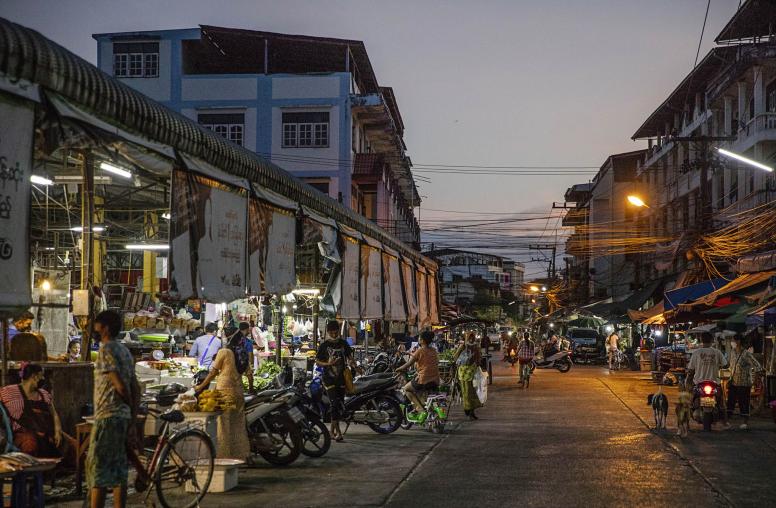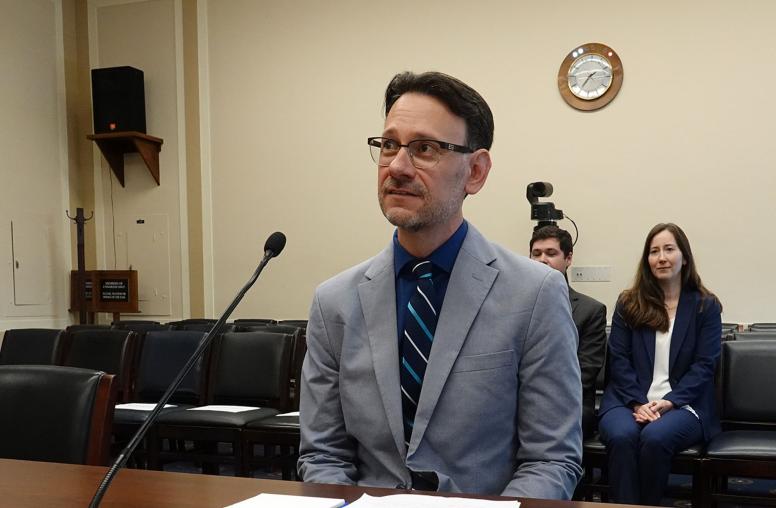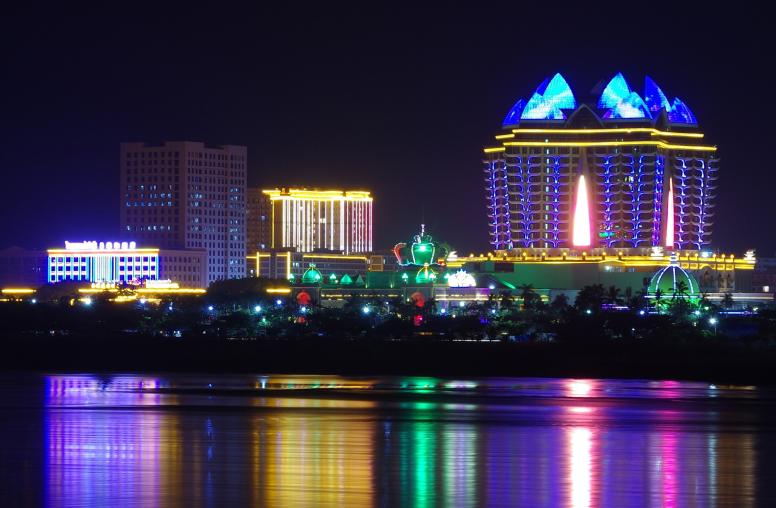Is the Climate Crisis Leading to ‘Rupture’ in Southeast Asia’s Mekong?
Accelerating environmental disruptions in the region are occurring as space closes for communities to participate in public decision-making.
In natural environments and in human societies, pressure for change can build up gradually for years, then suddenly reach a point of no return. Living in the new “Anthropocene” era of climate crisis, people worldwide are increasingly aware of the linkages between ecological, social and political stability. Stress in one of these domains can contribute to a rupture in others. According to human geographer Sango Mahanty, such a rupture is “a dramatic episode of nature-society disruption that is adverse, intense, and ripples across scales” of space and time. In Southeast Asia, one of the most visible instances of rupture is the explosion of dam construction on the Mekong River and its tributaries.

Unequal Impacts from Hydropower
A total of 24 dams are planned or already in operation on the mainstream Mekong in China, Laos and Cambodia, and hundreds more have been built in the river’s watershed, which includes parts of Burma (Myanmar), Thailand and Vietnam. Dams affect water flow and sediment levels downstream, threatening fisheries that provide food and livelihoods for millions and putting unique ecosystems such as Cambodia’s reverse-flow Tonlé Sap Lake at risk.
Governments in the region, notably Laos, expected that investments in electricity for export would provide a consistent source of revenue that could fund other social and economic development priorities. Instead, the construction of hydropower infrastructure has fed an increasing debt load that contributes to high inflation and a cratering currency. Since almost all the power is exported, local residents receive few if any material benefits in return. Thousands are displaced because of the flooding of their villages, and others are threatened by the risk of disasters such as the 2018 dam collapse in southern Laos that killed over 100 villagers and made at least 6,000 homeless.
Throughout the Mekong region, hydropower projects have pushed affected communities back into poverty and fragility. Around the Lower Sesan 2 dam in Cambodia, some indigenous and farming communities have accepted compensation and relocated, while some have refused compensation and remain near their flooded villages and communal fields. Others, unable to maintain their livelihoods, have been displaced and are forced to migrate to urban areas or other resource frontiers to make a living. Unplanned migration from dams potentially affects both domestic and interstate stability, with heightened likelihood of violent conflict or state repression.
Similar patterns occur with other large-scale investments in mining, agriculture, logging and industrial development, including in so-called “special economic zones” found in border areas and outside major cities. Farmers lose access to land; nearby communities are affected by pollution; indigenous cultures are displaced. Workers in the new investment projects are largely migrants, often facing difficult working conditions, exploitation, or in extreme cases, human trafficking and slavery. The resulting profits accrue to distant investors, both domestic and international, often connected to political, economic and military elites. Such investments add to national economic growth statistics while leaving most people worse off.
The social and environmental impacts of a single dam, mine or economic zone are variable. In principle, local impacts can be mitigated through government regulation and safeguard policies, such as those mandated by the World Bank and other international lenders. But the cumulative effects of a cascade of dams or hundreds of overlapping land concessions are beyond the scope of any project-based impact assessment to address. Implicit in the concept of rupture is the existence of an irreversible tipping point, beyond which unforeseen consequences spiral out of control. It is difficult to know where this threshold lies until it is too late.
Ruptures in Climate and Civil Society
The same risk of a tipping point applies to the global climate crisis. Southeast Asian countries are at the forefront of expected sea level rise, temperature and rainfall fluctuations, typhoons and other disasters resulting from climate change — a threat they did little or nothing to cause. According to the Intergovernmental Panel on Climate Change (IPCC), 19 of the 25 cities most exposed to a one-meter sea level rise are in Asia. The World Economic Forum notes that “sea levels could rise by much more — up to 15 meters by some estimates — if the polar ice sheets melt … which will set off a domino effect of other climate events.” Climate ruptures compound the social and environmental consequences of extractive economic projects, leaving rural residents increasingly vulnerable to displacement, unplanned migration and social breakdown.
At a July 2022 workshop on rupture at Chiang Mai University in Thailand, participants from academia and NGOs around the Mekong region underlined that accelerating environmental ruptures are occurring at the same time as a compression of space for communities to advocate and participate in public decision-making. The most blatant example is demonstrated in the societal suffering — and execution of four democracy advocates — in Myanmar following the 2021 coup. Environmental defenders have been arrested in Cambodia and Vietnam, while those who remain free face increasing levels of legal restrictions. Part of a global trend of pressure on civic space, the shift toward repression has been exacerbated by restrictions on movement during the COVID-19 pandemic.
At the same time, environmental NGOs in Mekong region countries continue to work cooperatively with government agencies where openings exist to improve policies and implementation. In Vietnam, for instance, a coalition of state and non-governmental actors led to the cancellation of several dam projects and influenced Prime Minister Phạm Minh Chính to commit to a goal of becoming carbon neutral by 2050. In light of these outcomes, the subsequent convictions and imprisonment of four NGO leaders on tax evasion charges shocked the country’s environmental advocates. While national leaders are aware of environmental risks and the geopolitics of water, they are more concerned that ruptures could kindle a large-scale social movement that makes broader political demands.
For donors, including the United States, Australia and the European Union, restrictions on civil society pose a quandary. International partners wish to support governments in the transition to a green economy, such as through the U.S.-ASEAN Climate Futures initiative announced by President Biden in 2021. Yet success requires the active involvement of communities and civil society to respond to displacement and loss, and to press for structural changes in laws and institutions that make future ruptures less frequent and severe. International climate and environmental programs negotiated with the Vietnamese government, such as the recently announced $15.5 billion Just Energy Transition Partnership (JETP), cannot be effectively implemented without consultation and participation of NGOs and environmental advocates along with government agencies. In addition, the Mekong-U.S. Partnership and the Mekong-Australia Partnership, among other efforts, have important roles to play in bridging regional government and civil society partners. Participants in the Chiang Mai conference cited a need for more lasting cross-border networks that link communities and policy makers in dialogues on water, climate and environmental issues, and are not simply reactive or project-based.
Future peace and stability in the Mekong region depend both on addressing the consequences of ruptures and ensuring that excluded people’s voices are heard. In the longer term, cooperative initiatives show the potential to move away from a resource extraction-based model of economic growth to a resilient model that includes space for communities and civil society to contribute to decisions that affect them. Only then can experiences of rupture, as Mahanty says, become “open moments” with the power to generate positive change.




